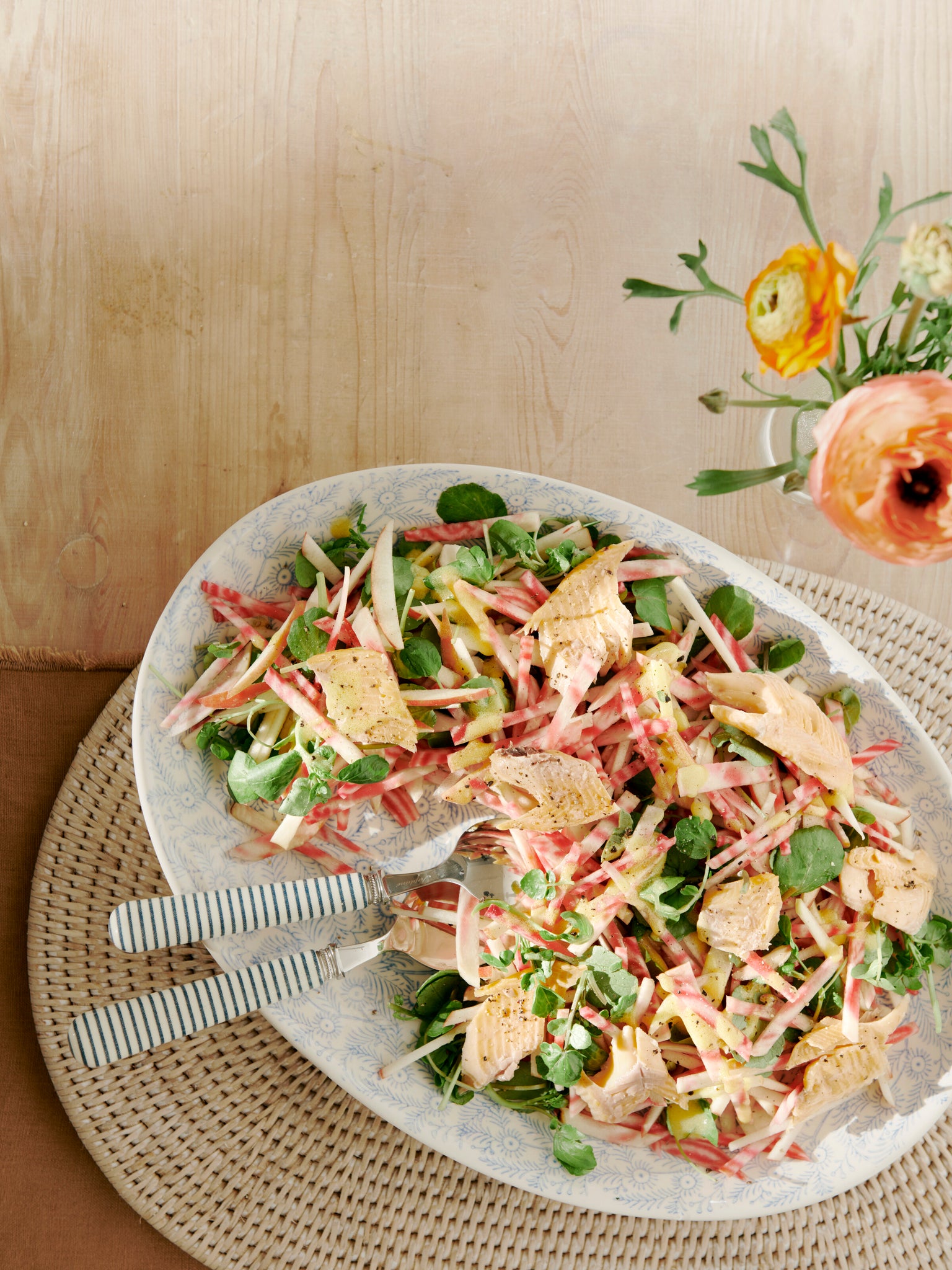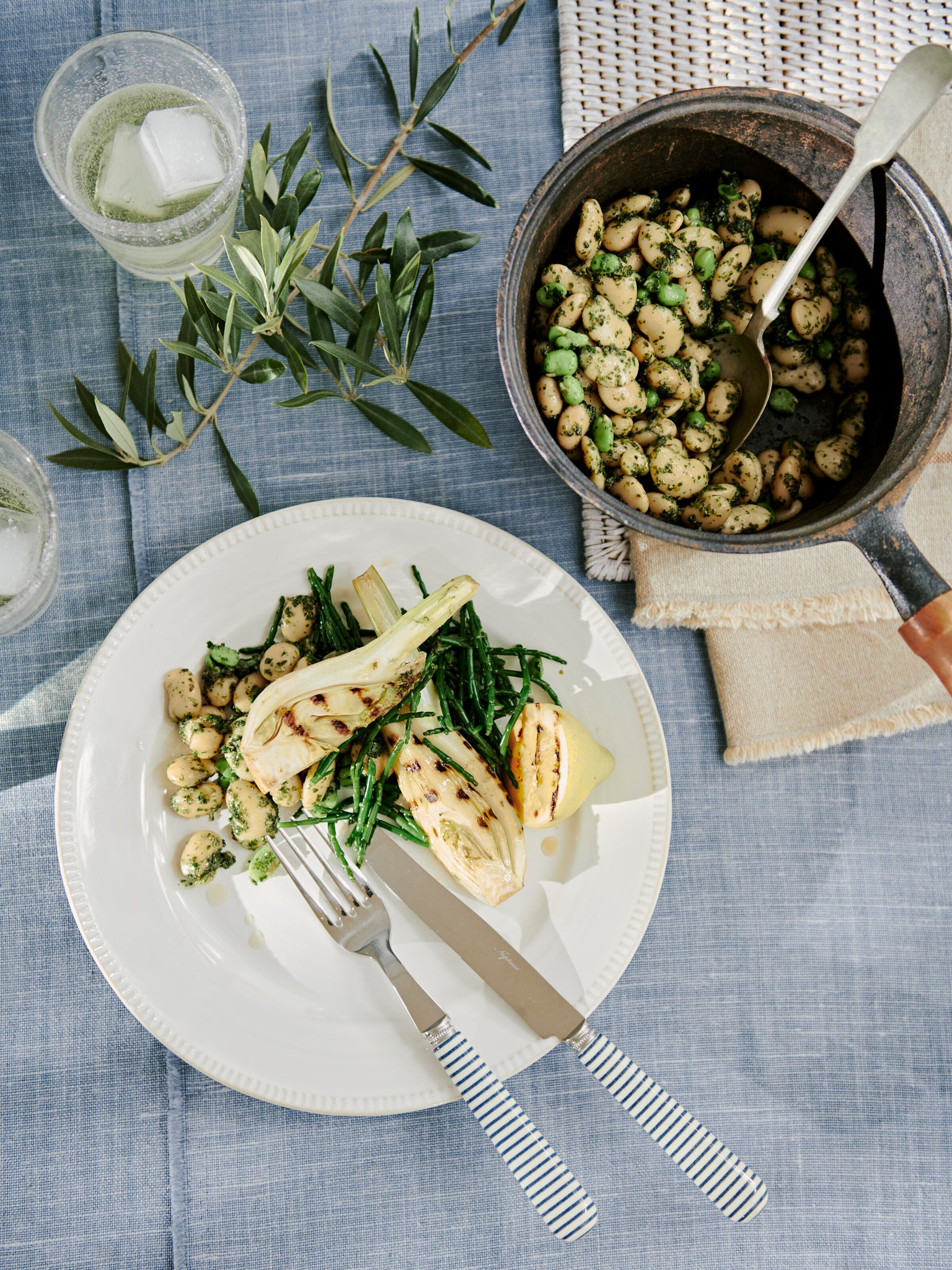
Split pea soup
When cooking plant-based dishes, it’s important to remember the protein content. Split peas or lentils are a great source of protein, and this soup not only looks beautiful and tastes delicious but is also great as a light lunch served with warm, crusty rye bread. Serves 4.
What you'll needÃ˝
- 90g shallots
- 2 cloves of garlic
- 100g carrot
- 1 stick of celery (70g)
- 7g ginger
- 200g split peas
- 1200ml water
- 10g vegetable Boullion powder
- ¬Ω tsp turmericÃ˝
- Olive oil
- For the garnish
- 25g each of pumpkin and sunflower seeds
- 1 tbsp soy sauce
What to doÃ˝
- Chop the shallots, carrots and celery to 5mm dice. Heat olive oil in a saucepan and add the diced vegetable mix, garlic and ginger. Fry gently, then turn it down to sweat, stirring occasionally. Add the turmeric and the split peas, stir, then add the stock and measured water. Cover with a lid and simmer gently for 45 minutes until the split peas are completely soft.
- Transfer the soup to a blender. Process until silky smooth, adding a little water if needed to achieve the texture of thick double cream. Pass through the sieve, season to taste and keep warm.
- Scatter the seed mix on a baking tray and roast for 10 minutes at 180°C in the oven. Remove, sprinkle with soy sauce and allow to cool.
- Pour the soup into 4 soup bowls. Garnish with roasted seeds and a drizzle of olive oil. Serve straight away.

Roasted beetroot and butter bean supperÃ˝
This dish is a family favourite as it is so tasty and reminds us of Italy, where sage is an important ingredient in many pasta dishes. We go big on sage at home, but if you don‚Äôt have any to hand, you can always substitute with parsley or other herbs. Serves 4.Ã˝
What you'll need
- 600g beetroot
- 400g Chantenay carrots
- 2 cans of organic butter beans
- Bunch of fresh sage
- 200g feta or goat’s cheese (optional)
- Extra virgin olive oil
- Garlic salt and pepper
- Pinch of chilli flakes
What to do
- Slow roast the beetroot by wrapping each bulb tightly in foil and cooking in the oven for about 1 hour at (fan) 200°C. Check they are cooked by inserting a skewer into the beetroot to ensure it is soft. When cooked, roughly chop up and set aside.
- Drizzle the carrots with olive oil, garlic salt and pepper and, in the same oven, roast them whole for 25 minutes.
- Empty 2 cans of organic butter beans into a saucepan with the aqua fava juice from the tin and leave them to gently simmer for up to 10 mins. Season with garlic salt, pepper and a pinch of chilli flakes.
- Meanwhile roughly chop up a handful of fresh sage leaves and lightly fry with olive oil and a knob of butter until crisp. Add a sprinkle of garlic salt and pepper to taste. Toss the beans into the sage oil and butter and heat through.
- Dish the roasted beetroot, carrots, butter beans and sage onto a plate and, if you wish to, crumble over a block of feta cheese or goat’s cheese. Serve immediately.

Chocolate honey pots with chocolate soil and rose sorbetÃ˝
This little chocolate pudding really packs a punch and has the advantages of extra virgin olive oil and dark chocolate ‚Ä� both highly beneficial ingredients on the Blood Type Diet, which we follow at home. The delicate rose sorbet is a lovely palette cleanser and balances the chocolate perfectly.
What you'll needÃ˝
For the chocolate pots:
- 300g dark chocolate, 53-55% cocoa solids, coarsely grated
- 110ml extra virgin oil
- 2 pinches of sea salt
- 360ml boiling water
- 40g honey
For the sorbet:
- 245g caster sugar
- 15g dried rose petals
- 545g water
- 1 tbsp glycerine
- Juice of 1 lemon (30ml)
For the chocolate soil:
- 100g caster sugar
- 2 tbsp water
- 75g dark chocolate, 53-55% cocoa solids, coarsely grated
What to do
- Melt the chocolate over a bain-marie. In a heatproof mixing bowl, combine the chocolate with the boiling water and add the honey, olive oil and salt. Gently whisk the mixture until it is silky smooth and cool to the touch. Pour the mix into 4 to 8 pots and put in the fridge for 4 hours to set.
To make the rose sorbet
- Bring the sugar and water to the boil and simmer for 10 minutes, add the rose petals and simmer for a further 5 minutes, then add the lemon juice and glycerine. Stir through. Remove from the heat and leave to sit for 30 minutes. Drain the liquid and give the petals a squeeze.
- Pour into a container and place in the freezer uncovered. Leave for a couple of hours until the edges start to freeze. Stir the mixture and allow to freeze again, repeat until frozen. Blend the sorbet to give a smoother consistency then return to the freezer until ready to serve.
To make the chocolate soil
- Heat sugar and water to around 137¬∞∞‰ then remove from the heat and quickly stir in the broken-up chocolate, keep mixing until the soil is a crumbly consistency.
- Sprinkle a little chocolate soil onto each chocolate pot and top with a scoop of sorbet. Serve straight away.



























